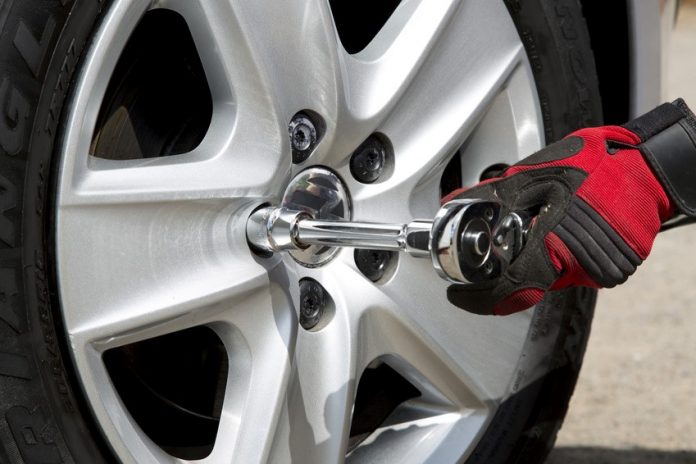Although the mounting of wheels onto a vehicle is generally self-explanatory, problems occur time and time and again in practice. The risks associated with an incorrectly tightened wheel are often underestimated. In order to avoid these risks, some aspects should be considered.
What is the Standard Tension Force?
During driving, the bolted connection of the wheel should absorb all dynamic loads, in particular vibrations, so the wheel, brake disc, and hub all behave like a singular part. To accomplish this, a standard tension force must be generated. This is defined as the force required to tighten a bolt in the axial direction.
The torque which is used to produce the standard tension force of the bolt during assembly generates a tensile strength in the thread. This leads to an elastic extension of the bolt and to a shortening of the wheel rim. Parameters, such as tightening torque, friction in the thread, material properties, and dimensions of the bolt and its strength class, influence the standard tension force.
When the Standard Tension Force is Too Low
If the wheel bolt is tightened with a lower torque than prescribed by the vehicle manufacturer, the required standard tension force is not achieved. Under load, this results in component vibration. The consequences can include the loosening of the bolt and, in the worst case scenario, the loss of the wheel.
Even if a wheel bolt is tightened several times, its standard tension force changes. With rusty, dirty, or damaged wheel fastenings, the coefficient of friction increases enormously so the standard tension force is greatly reduced.
When the Standard Tension Force is Too High
In the case of wheel fastenings being tightened without a torque wrench, it can be assumed that the screw is tightened too tightly. This leads to the elongation of the wheel bolt or to the compression of aluminum rims in particular.
In the case of retrofitted, lubricated wheel fastenings, friction is greatly reduced so the wheel fastening is over-stressed even when a torque wrench is used. In the worst case scenario, the bolt will break off.
Instructions for Mounting Wheel Bolts
- The prescribed tightening torques of the vehicle manufacturers must be observed.
- Only use torque wrenches whose use ensures exact compliance with the specified torques.
- In the event of rust, plastic deformation, or damage to the threads, the bolts must be replaced.
- Check the wheel hub thread for dirt and corrosion; replace if damaged.
- Clean the corroded wheel contact surface
- Check the bolt and rim contact surfaces for dirt, oil and grease, and damage.
- Tighten the wheel bolts evenly and in the correct order. Please be sure to observe the manufacturer’s instructions.
- Never use impact wrenches when tightening.
- Do not use oil or grease




